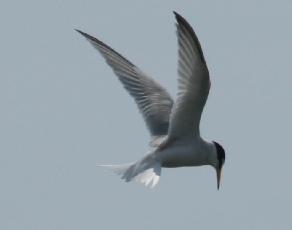Chesil Beach and the Fleet Lagoon
18 miles and 180 billion pebbles
Ferrybridge - Birds

The Ferrybridge area has few resident bird species. However, it is on a key migration route so many unusual species can be seen spring and autumn.
The most common species are the gulls, such as herring gull and black-headed gull, and waders, such as the dunlin and little egret. Little terns nest on the pebbles of Chesil Beach along with a small number of oystercatchers and ringed plovers. In the winter there are large flocks of brent geese on the sandflats and red-breasted mergansers on the Fleet. Cormorants can often be seen fishing in the Fleet and then sitting on buoys to dry their wings.
During the migration season large numbers of wheatears can be seen on the grassy area on the back of Chesil Beach and numerous swallows and house martins pass through.
There is usually a large flock of starlings around the car park by the visitors centre and linnet can often be seen in the southern half of the car park which has been left to re-wild. Crows can be seen foraging along the grassy areas of the beach and are sometimes joined by ravens.
The commonest bird of prey is the kestrel which nests at the Bridging Camp and can often be seen hovering over the grass verges of the road and the vegetation on Hamm Beach. Less common birds of prey that may be seen are the peregrine falcon and osprey.
Little tern colony
In the spring and early summer a colony of little terns nest on Chesil Beach just beyond the rifle range butts. This area is managed by the RSPB to ensure the birds are not disturbed. The area is fenced from April to July, please do not cross the fence line. You can walk around the area on the seaward side of the beach.


